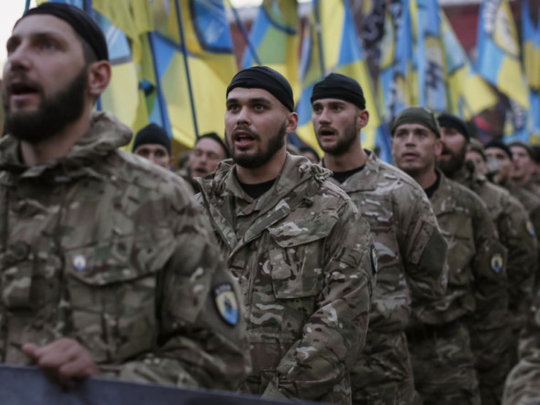
When Ukrainian President Petro Poroshenko spoke to a joint session of Congress last month, he thanked the US for its assistance in confronting Russian aggression, and indeed, America, along with its Nato allies, has done much. But Poroshenko asked us for more. “Blankets, night-vision goggles are also important,” he said, “but one cannot win the war with blankets.”
Americans believe now is the time to add defensive military aid, including weapons, to their support of Ukraine. This is a cause worth supporting. The Ukrainian people face a heavily armed insurgent force equipped, trained and supported by Russia and more recently, Russia’s own military forces, seeking to establish by force the political and economic dominance that Russian President Vladimir Putin desires. This aggression undermines peace and stability not just for Ukraine, but also in all of Europe and sets the wrong precedent for international relations. And that is a threat to US interests. As we saw with the tragic downing of a Malaysian passenger jetliner reportedly by Russian-supported forces, the impact of Putin’s reckless aggression is global.
It is important to remember what sparked Russia’s intervention: The peaceful, democratic protests of the Ukrainian people that unseated a corrupt, Putin-friendly regime. Supporting Ukraine’s desire for peace, freedom, territorial integrity and democracy supports values that Americans hold dear.
America and its Nato partners have taken significant steps to support Ukraine by providing more than $100 million (Dh367.8 million) in military assistance (including an additional $46 million of assistance announced during Poroshenko’s visit), deployments to Eastern Europe and increased military cooperation. And most important, America and its European partners have imposed biting economic sanctions that have damaged the Russian economy, plunging it towards recession and signalling to Putin that he cannot benefit from European economic strength on one hand while endangering it on the other.
But this aid so far has not included the weapons the Ukrainian military needs to defend itself. Ukrainian forces are suffering significant casualties from artillery fire, a result of the heavy weapons provided, and probably operated, by Russia on behalf of the rebels. At the same time, Poroshenko and the Ukrainian military has shown great restraint in resisting Russian provocations, declining to fire back at artillery coming from Russian territory and making it clear their only objective is to defend their own territory.
Ukrainian forces have demonstrated the will to defend their nation against superior rebel and Russian forces; what they lack is not will, but means. Ukraine has taken significant risk in pushing back against the aggression of its much larger neighbour and done so with no expectation that US or Nato forces will come to their aid. Ukrainians also understand that receiving additional weapons to defend themselves involves risk. They are not asking America to fight their battles; they are merely asking for the capability to fight for themselves for the same principles that America values. Americans believe the US should begin providing defensive weapons that will help Ukraine defend its territory. Such weapons can include anti-tank weapons to defend against Russia-provided armoured personnel carriers, ammunition, vehicles and secure communications equipment. This will present no threat to Russia unless its forces launch further aggression against Ukraine. In other words, these weapons are lethal, but not provocative, because they are defensive.
This support will help promote the solution that the US and Ukrainians seek: A durable ceasefire leading to a longer-term solution that respects Ukraine’s sovereignty, its future and its freedom to determine its own democratic path, including through parliamentary elections later this month. While there is no purely military solution to what is a political problem, additional US military assistance can help promote a political solution by raising the costs of further aggression by Russia. Raising the costs will give Putin pause to allow political and economic pressure from outside and within Russia to force a political accommodation.
Additional weaponry should be only one part of American strategy. It should be combined with support for Ukraine’s efforts to reform its political and economic institutions and reduce its energy dependence, continued diplomacy and relentless pressure on the Russian economy. But that strategy should include the weapons to help Ukraine’s troops defend their nation.
— Washington Post
Carl Levin, a Democrat, represents Michigan in the Senate, where he is chairman of the Senate Armed Services Committee. James Inhofe, a Republican, represents Oklahoma in the Senate and is the ranking minority member on the committee.








